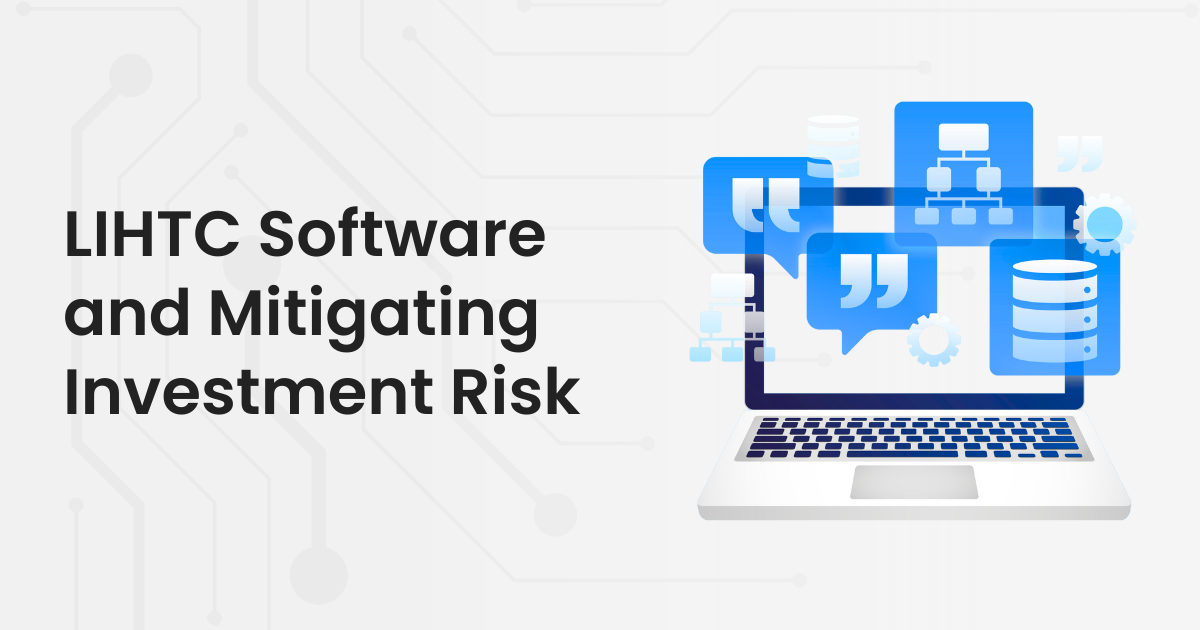LIHTC (Low-Income Housing Tax Credit) software is a specialized tool designed to manage the complexities of LIHTC projects, including the intricate financial reporting requirements.
This software is engineered to handle the unique needs of LIHTC accounting, from tracking the allocation and utilization of tax credits to ensuring compliance with federal and state regulations. Its capabilities extend to tracking compliance requirements like tenant eligibility and rent calculations, making it an indispensable asset for developers and investors in the affordable housing sector.
This article explores what LIHTC software can do and how it helps create financial reports that add value to stakeholders.
Simplification of Complex Financial Reporting Tasks
LIHTC software streamlines the financial reporting process by automating many of the tasks that are traditionally manual and error prone.
This includes the generation of financial statements, calculation of tax credits, and preparation of compliance reports. By simplifying these tasks, the software reduces the time and effort required to manage financial reporting, allowing stakeholders to focus on strategic decisions rather than getting bogged down in administrative details.
Features of LIHTC Software for Financial Reporting
Calculating tax credits, ensuring compliance with evolving regulations, and managing vast amounts of documentation demand precision and efficiency. LIHTC software provides asset managers with some essential features that can help in their regular financial reporting tasks.
Automated Calculations: Automatically computes eligible basis, tax credit amounts, and other critical financial metrics, ensuring accuracy and consistency.
Compliance Checks: Integrates current regulations and guidelines to monitor compliance across all aspects of LIHTC projects, flagging potential issues for review.
Document Management: Centralizes storage and management of financial documents, lease agreements, and compliance paperwork, simplifying retrieval and review.
Reporting Templates: Offers pre-designed templates for common financial reports, including profit and loss statements, balance sheets, and cash flow statements, tailored to LIHTC project requirements.
Benefits of Using LIHTC Software for Financial Reporting
The complexity of adhering to LIHTC regulations, coupled with the need for meticulous financial management, poses significant challenges financial reporting for LIHTC projects.
LIHTC software can streamline the financial reporting process, mitigate risks of non-compliance, and enhance operational efficiency.
Improved Accuracy
By automating calculations and utilizing built-in validation checks, LIHTC software significantly reduces the likelihood of errors in financial reporting.
This leads to more accurate financial statements and compliance reports, crucial for maintaining project viability and meeting investor expectations.
Enhanced Efficiency through Automation
The automation capabilities of LIHTC software streamline the entire financial reporting process, from data entry to report generation. This efficiency gain saves time and reduces operational costs associated with financial management of LIHTC projects.
Better Compliance Management
Staying abreast of the latest regulatory requirements is a challenge in the dynamic LIHTC landscape. LIHTC software includes features that are updated in line with regulatory changes, ensuring that financial reporting and project management practices remain compliant.
This proactive approach to compliance management mitigates the risk of non-compliance penalties and ensures the integrity of the investment.
Real-Time Access to Financial Data and Reports
LIHTC software provides stakeholders with real-time access to financial data and reports, enabling timely and informed decision-making. This immediate insight into the financial health of LIHTC projects is invaluable for responding to market changes, adjusting strategies, and optimizing performance.
Strengthened Investor Confidence
Transparent and reliable financial reporting, facilitated by LIHTC software, builds trust with investors.
The ability to produce accurate, timely, and compliant financial reports demonstrates a commitment to project success and regulatory adherence, enhancing investor confidence and supporting future investment opportunities.
The Key Components of Financial Reporting in LIHTC Projects
Financial reporting within LIHTC projects is a nuanced process, requiring meticulous attention to detail to ensure accuracy and compliance.
Balance Sheet
A critical snapshot of financial health, the balance sheet in LIHTC projects categorizes assets (both current and fixed), liabilities (short and long-term), and equity. It details some critical elements in LIHTC projects.
- Capital Contributions: Precise recording of investor capital injections, distinguishing between initial equity contributions and subsequent infusions.
- Loans: Accurate classification of construction loans, permanent financing, and any subordinate financing, including terms and maturity dates.
- Equity Position: Reflecting the equity impact of tax credits, including the deferred tax asset/liability and the equity adjustments over the compliance period.
Income Statement
This is also called the Profit and Loss Statement. The income statement for LIHTC projects should meticulously track the income and expenses of a LIHTC project.
- Rental Income: Breakdown of rental revenue, including occupancy rates and average rent per unit, factoring in LIHTC rent restrictions.
- Operating Expenses: Detailed categorization of expenses such as maintenance, property management fees, insurance, and property taxes, highlighting any variances from the budget.
- Net Operating Income (NOI): Calculation of NOI, crucial for assessing the project’s financial performance and its ability to cover debt service and reserves.
Statement of Cash Flows
Cash flow is like oxygen for a LIHTC development project. A bottleneck can cause serious complications and even jeopardize the entire project. In LIHTC projects, the cash flow statement is segmented into various components.
- Operating Activities: Cash generated from operations, emphasizing rent collection efficiency and operating expense payments.
- Investing Activities: Outflows related to capital improvements and inflows from disposals of fixed assets.
- Financing Activities: Movements in equity contributions and loan proceeds, including distributions to investors and debt service payments, with a keen focus on maintaining liquidity for reserve requirements.
Budget vs. Actual Reports
A project’s cost might vary from the budgeted costs. In LIHTC projects, tracking and reporting this variance is a critical part of maintaining compliance. These reports should offer a granular comparison of budgeted versus actual figures.
- Variance Analysis: Detailed analysis of variances in income and expenses, identifying the reasons behind deviations and their impact on the project’s financial health.
- Corrective Actions: Recommendations for adjustments in operations or budgeting practices to address identified variances and ensure financial stability.
Tax Credit Calculation and Compliance Reports
Tax credit calculations are a prerequisite of obtaining credits that syndicators and funds can then monetize. During the lifecycle of the LIHTC projects, compliance monitoring is a critical component to ensure the LIHTC investment’s viability and must take place for the entire project’s lifetime.
- Eligible Basis: Detailed computation of eligible costs, adjustments for federally subsidized projects, and the applicable percentage for credit calculation.
- Compliance Status: Tracking of unit occupancy, tenant income verification, and rent compliance, including any non-compliance incidents and remediation efforts.
Occupancy Reports
After the development phase is over, these reports become critical to monitor the health of the LIHTC project during the compliance period.
- Tenant Eligibility: Documentation of tenant income eligibility checks, including initial qualification and annual recertification.
- Unit Status: Current occupancy status, turnover rates, and waiting list management, ensuring adherence to LIHTC occupancy requirements.
Capital Account Statements
This is a part of the regular financial reports that funds must distribute to their investors. For investor and compliance tracking, these statements include some basics.
- Equity Contributions and Distributions: Detailed tracking of all investor contributions and distributions, aligned with the project’s financial performance and tax credit delivery.
- Compliance Impact: Analysis of how compliance issues or challenges may impact investor returns and equity positions.
Software That’s Designed for LIHTC Projects
LIHTC software offers a suite of tools designed to tackle the complexities of LIHTC projects. It makes an asset manager’s job easier and reassures investors of a project’s viability. LIHTC software is critical for the successful management and operation of LIHTC investments.




